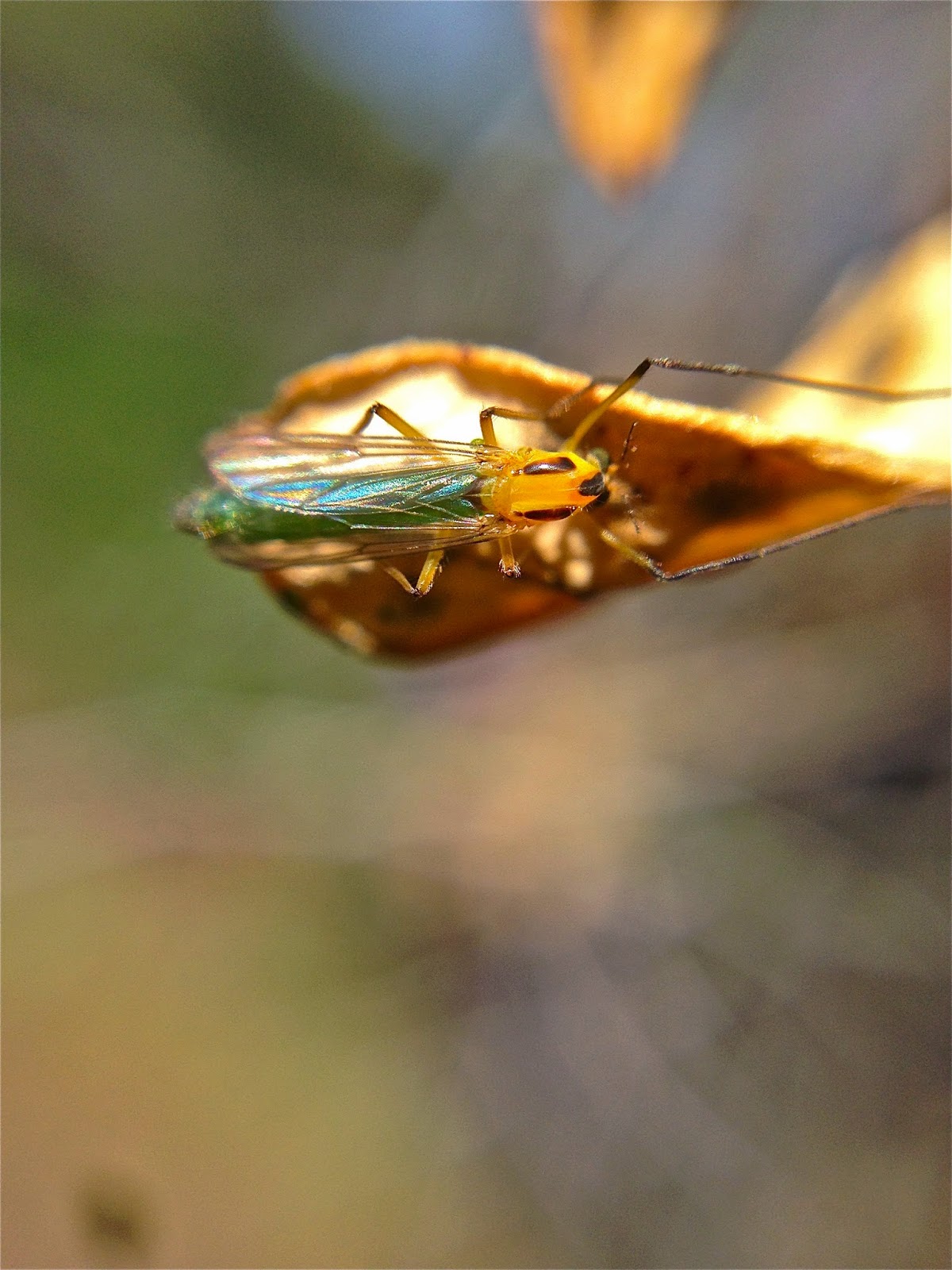 |
| Male Chironomid Midge on Hare's Tail Grass (or the Bunny Tail Grass, Lagurus Ovatus) |
 |
| Yellow Chironomid Midge on Lagurus Ovatus. |
 |
| Yellow Chironomid Midge |
There were a group of them clinging on to the weed, basking in the sun. The sun worked against me to take a good picture but the insects were still enough for me to find an angle to shoot. I love those times when the insects pose for me!
This is the Chironomid Midge, also known as the Green Midge. It is a non biting midge related to the notorious biting midges (Ceratopogonidae). The resemblance to mosquitos is because they belong to the same suborder of Nematocera (characterised by thin, filamentous, segmented antennae) and to the same infraorder Culcimorpha. The mosquitos branch off into the superfamily Culicoidea and midges branch off into the superfamily of Chironomidae.
I am not sure what genus or species the one I photographed belongs to. Apparently there are so many obscure species of Chironomidae that it needs cytogenetic confirmation using their Polytene Chromosomes*. Genetically interesting fact about Chironomidae is that the Polytene Chromosomes were first discovered in the salivary glands of these midges (Balbiani in 1881) much before the hereditary pattern was studied in fruit flies. The salivary glands of chironomids are still used for the study of polytene chromosomes.
Chironomids are ecologically important. Many species of Chironomids adapt easily to anoxic conditions in polluted water. The larvae are red due to haemoglobin content which helps them get as much oxygen from the toxic environment. The abundance of Chironomids indicate low biodiversity in the ecological system due to presence of high level of pollutants. Chironomids are the food for fish and many aquatic organisms. The presence of midges in Western Australian wetlands is supposedly a nuisance for people's outdoor activities. This is because they are attracted to and cluster around UV light sources. They are small enough to pass through fly meshes.
Location: Big Swamp Wildlife Park, Bunbury, Western Australia
(seasonal fresh water wet land)
Season: Spring (October)
Order: Diptera
Suborder Nematocera
Infraorder: Culicomorpha
Superfamily: Chironomoidea
Family: Chironomidae

No comments:
Post a Comment
Note: only a member of this blog may post a comment.